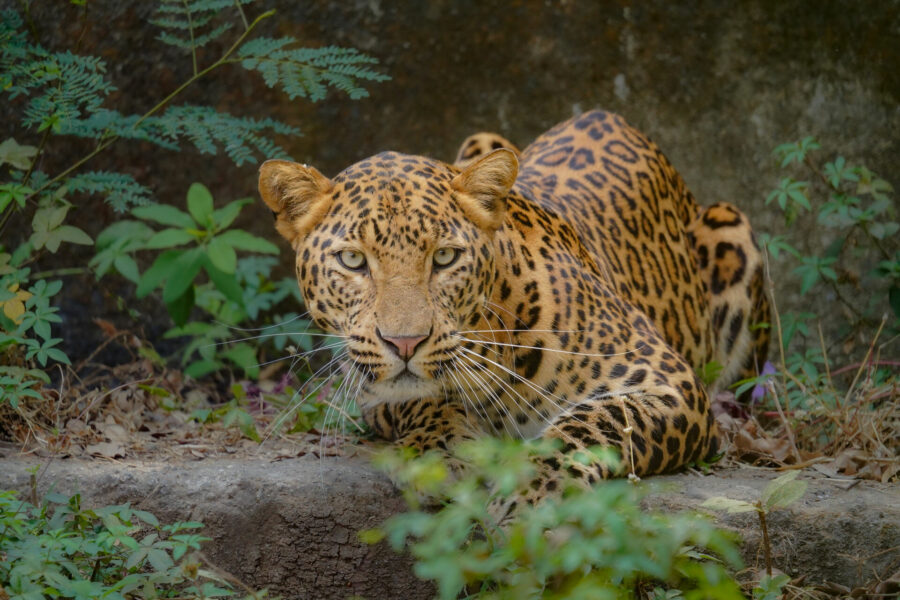Jackals have been associated with diverse perceptions all over the world. In African culture, the jackal is portrayed as a trickster, and Indian folklore describes the animal as being sly and clever. The Bible has a jackal representing loneliness and abandonment, whereas the Egyptian god Anubis, depicted with the head of a jackal, is known for being benevolent and a guide for the souls of the dead.
A partial understanding about this species has kept away several interesting facts about jackals. For instance, jackals are known to be scavengers, but are you aware that they are also excellent hunters? By feeding on animal carrion and preying on small mammals, jackals contribute significantly to keep the ecosystem clean and balanced.

Studies on these animals continue to astound us with their jaw dropping discoveries. There are three species of jackals that exist, namely, the black-backed jackal (Lupulella mesomela), the side-striped jackal (Lupulella adusta), and the golden jackal (Canis aureus). Of these, golden jackals are the ones that can be found in Africa as well as Eurasia. Research has revealed that the golden jackal found in Africa is genetically closer to the grey wolf and coyote found there than its namesake in Eurasia!
The golden jackal is the most widespread wild canid (member of the dog family) in the Indian subcontinent, and is often mistakenly identified as an animal that looks similar to it. Let’s explore what is lesser known about the golden jackal!

1. Neither a Wolf, Nor a Fox
A golden jackal is a medium-sized mammal. Compared to a wolf, these canids is physically thinner, and has a slender muzzle. It has a short, yet bushy tail, that ends with a tan or a black tip. Its basic coat colour can be described as golden brown, and the fur on the back is a mix of black, brown, and white. Golden jackals may develop a darker tawny shade in winters, depending on the region they reside in. Unlike foxes, the legs of golden jackals are long, and they have slender feet with small foot pads, which makes their gait lighter too.
2. Pack of Pals!
Golden jackals live in a group of 4 to 5 individuals. They hunt together, share their food, groom each other and jointly defend their territory, which they mark with the scent of their excretion. Rearing of the pups is a cooperative effort by the members of the pack.

3. Lifelong Pairing
Golden jackals are one of the few mammals that can form long-term breeding pairs. In terms of social hierarchy, the breeding pair in a pack holds the highest rank, followed by their young. The pair collaborates during hunting activities as well. The female gives birth to a litter of one to nine pups, and the parents share equal responsibility in protecting and raising them.
4. Howl do you do!
Golden jackals communicate through a range of howls that eventually build up to collective, high-pitched calls. Just one howl can trigger responses from nearby jackals. Howling also takes place between a pair during breeding season, which in India takes place between December to April. This call can also indicate the pair defending its territory as well. They have been seen emitting a unique warning call when facing threats from large carnivores.
5. Home is where the Food is
Golden jackals are omnivorous and can live in a wide range of habitats. They are present in semi-desert regions, areas with short to medium grasslands, forests, mangroves, and even within agricultural, rural, and semi-urban zones in India.
These canids are opportunistic foragers, which means their diet can adapt to the season and the habitat they are present in. With lithe bodies and long legs, jackals trot over large distances in search of food. They use their hearing and smell to track and hunt lizards, rodents, snakes, birds and even invertebrates, and also consume a large number of fruit and vegetables. In certain areas, cooperative hunting with the pack helps them catch hold of larger mammals. Golden jackals also scavenge on dead animal carcasses and in areas close to human settlements, they feed on disposed food in garbage dumps.
The Urban Conundrum: Rescues of Golden Jackal
Anthropogenic activities like rapid urbanisation, widespread industrialisation, and expansion of agricultural land and human settlements into forested regions have converted large wildlife habitats into those populated by people. These have resulted in sudden encounters and conflict situations, with golden jackals in India now being frequently sighted in urban spaces.

Recently, Wildlife SOS dealt with two such incidents in Delhi that took place within a span of ten days! In the first instance, our Rapid Response Unit, along with the Delhi Fire Services, rescued a three-year-old female golden jackal who was severely affected by the harsh weather conditions. In the second case, the owner of a farmhouse informed the team immediately after he saw a female golden jackal being attacked by five stray dogs. Our team swiftly rescued the distressed animal and provided her with urgent treatment. After the two rescued canids had healed completely, they were released safely back into the wild.
Mitigating human-wildlife conflict requires a multifaceted approach that addresses the underlying causes. Conservation efforts must prioritise the protection of natural habitats and the creation of wildlife corridors to bring back the balance needed in ecological systems. Along with this, education and awareness programmes are crucial in promoting understanding and empathy towards wildlife, enlightening locals to take appropriate measures when they spot wildlife in their neighbourhood.
If you come across an animal in distress, please reach out to Wildlife SOS’s 24×7 helplines:
Delhi-NCR: +91-9871963535
Agra, Uttar Pradesh: +91-9917109666
Vadodara, Gujarat: +91-9825011117
Jammu And Kashmir: +91-7006692300 or +91-9419778280
By working together, we can ensure the survival of golden jackals and other wildlife species, and promote a peaceful coexistence between humans and animals within urban environments.





